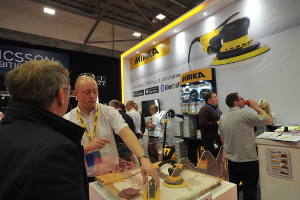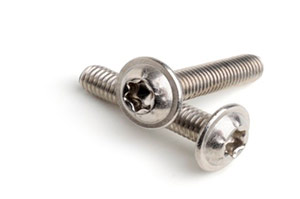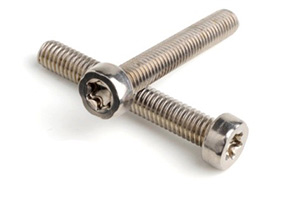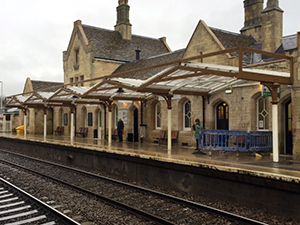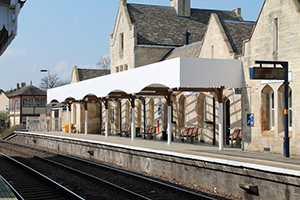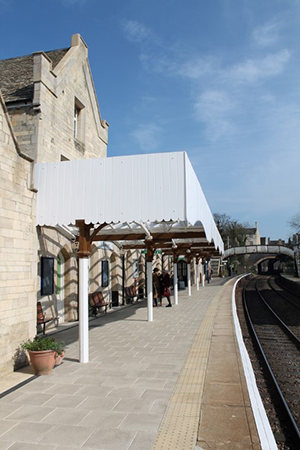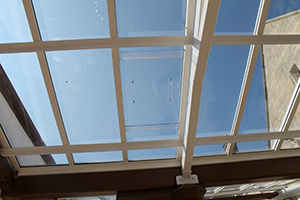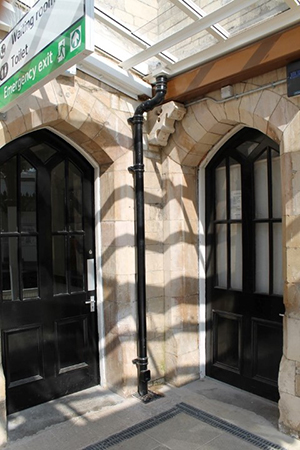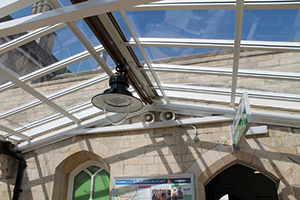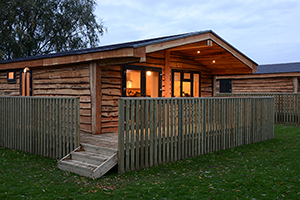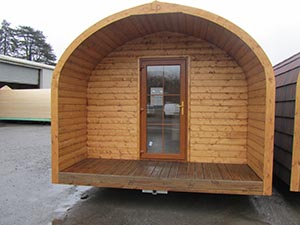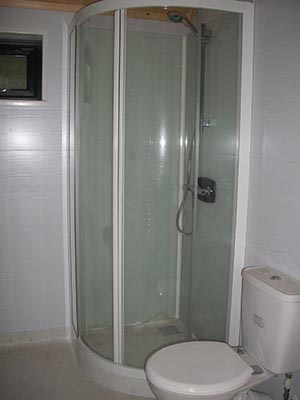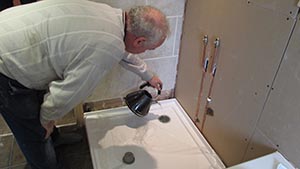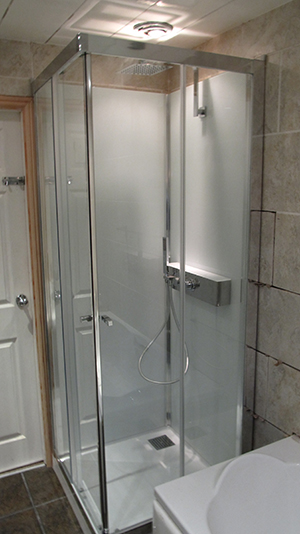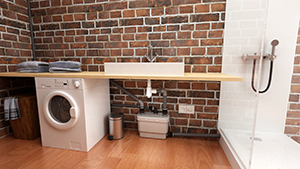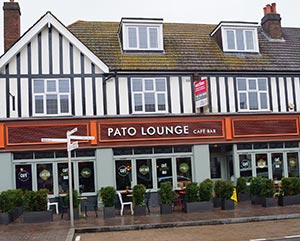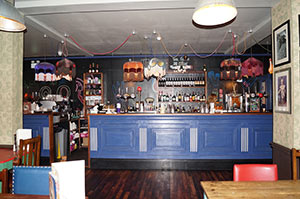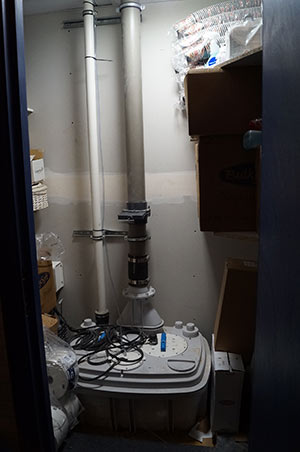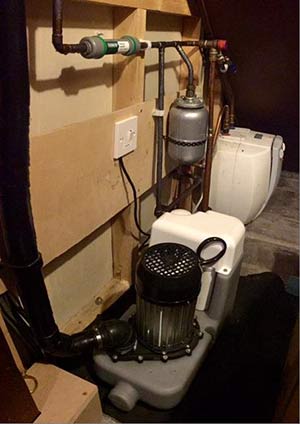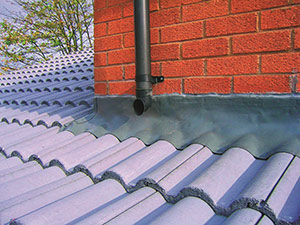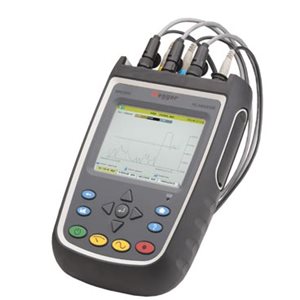All posts by admin
UNMISSABLE !
Story
UNMISSABLE !
This year’s National Painting and Decorating Show is a must-see! The biggest and best yet, it is your opportunity to see the latest products, proven best sellers, preparation tips and finishing techniques that will be making the news in 2018 and beyond.
Painting and decorating contractors , interiors designers ,merchants , refurbishment specialists and facilities managers are always on the lookout for the latest colours, materials and textures – as well as the best tools to get every job done quickly and profitably.
A great day out
It really is an action-packed two days buzzing with –
- new product launches
- practical demonstrations
- fantastic show-only deals
- free samples
- hands-on trials
- fun competitions, raffles and prize draws
- sporting challenges and celebrity appearances.
Big discounts
The major manufacturers use the show to bring new products to market, while stockists tempt visitors with big discounts, and suppliers pack their stands with extensive selections of tools, ancillaries and workday essentials.
See the masters at work
Brush and roller techniques, abrasives innovations, spray demonstrations, new decorative effects . timber repair are just some of the presentations by experts taking place every 30 minutes in two ‘open-area’ MasterClass theatres situated right in the centre of the exhibition. Check out the daily programme in your FREE showguide.
PRE-REGISTER NOW – IT’S EASY…..
Pre-register today for FREE tickets at www.paintshow.co.uk
RICOH ARENA,COVENTRY, 28th and 29th NOVEMBER
View National Painting & Decorating Show's profile:
ISO specification fastener in Stainless Steel
Story
Precision Technology Supplies Ltd, are now holding stock of a wide range of the new ISO specification fasteners in Stainless Steel. The changes are causing some confusion with customer., However PTS have taken great care to ensure they make the changes as smooth as possible. PTS will also continue to hold stocks of the previous Din/ISO versions as customer requirements for these parts continue. If you have a requirement for ISO specfifcation fasteners in Stainless Steel, or are unsure which version you require, give us a call we will be happy to assist.
View Precision Technology Supplies's profile:
Twinfix Multi-Link-Panels Non-Fragile chosen to replace old curved corrugated roofing
Story
As part of the Railway Upgrade Plan, Platform 1 at Stamford Station in Lincolnshire was recently refurbished. Careful consideration resulted in the use of Twinfix Multi-Link-Panels Non-Fragile to replace the old curved corrugated roofing of the canopy and the end result is more in keeping with the original age and design of this elegant Grade II listed building. Passengers and staff are now all benefiting from the high levels of natural light that floods the platform.
Products
- 110 sq.m. of Multi-Link-Panel Non-Fragile rooflights fitted with 6mm clear solid polycarbonate glazing, and including 12 No. in-line Twinfix Access Hatches, all installed at 600 mm centres, and employing 50 mm wide glazing bars to the panel system.
- Pressed aluminium flashing and gutters.
- All aluminium powder coated to RAL 9910 matt.
Product Benefits
- Multi-Link-Panel rooflights are light in weight; factory pre-assembled to minimise installation time and site errors; are quick to fit, minimising station downtime; and are non-fragile to ACR[M]001:2014.
- The solid polycarbonate glazing is transparent like glass, but is only half the weight of glass and is virtually unbreakable.
- Inconspicuous in-line Access Hatches within the Multi-Link-Panels enable roof/gutter maintenance to be undertaken safely from below the glazing.
Client
Network Rail LNE, York
Principal Contractor
Colt Construction Ltd
Sub-Contractor
Orchard Roofing & Building Ltd
View Twinfix's profile:
New Kinedo cubicle finds favour in homes and holiday homes
Story
An upgraded version of a Kinedo cubicle from bathroom brand, Saniflo, has been specified not only for housebuilding but by companies in the leisure sector. The Kineprime Glass is an updated version of Kineprime Contract, which has long been a popular model in student accommodation and in council houses and local authority homes. The new model replaces functional plastic internal panels with stylish opaque glass ones and comes complete with a thermostatic valve and handset and hose. This unit is ideal in the smaller bathroom and this is where its appeal lies for manufacturers of holiday accommodation.
MRC Modular in Downham Market is currently installing 150 Kineprime Glass corner units into their new, luxury log cabins which are being despatched to holiday parks throughout the UK, whilst Swansea based manufacturer, The Log Pod, has ordered an initial 120 of the same cubicles – with slider door option – to be fitted across its range of static and mobile pods.
Andy Lancaster of MRC Modular specified the cubicles primarily because of the time-saving aspect. Once his installers had been trained by Saniflo’s technical team he found that units can be fitted and working in just a few hours. The intuitive assembly process, combined with internal panels (as opposed to tile and grout) means that once the cubicle is in it can be connected and working with no need for follow-on trades;
“The Kinedo cubicles not only save us installation time, but because they come with the tray, shower valve, showerhead and handset in the package, we don’t have to separately specify those items. In a timber frame building – where the wood can expand and contract with the weather conditions – we have found that this movement can be detrimental to tiles and grout; causing slippage, cracks in the grout and sometimes leaks. The glass panels eliminate this issue and so are proving to be more suitable for our log cabins. They are also very attractive which is important for customers who can enjoy home comforts whilst on holiday.”
Size is even more important for The Log Pod. The overall compact dimensions of the pod mean that there is a lot to squeeze into a confined space. The Kineprime Glass 800×800 model fits unobtrusively in the corner of the pod bathroom, yet provides a spacious showering area.
Edgar Wallace is the company’s Sales Director;
“Demand for our log pods has increased thanks to the popularity in glamping and staycations. We have scaled up production in our new factory and switching to the integrated cubicle is already saving us time. Taking delivery of the whole package – rather than individual elements – is far more efficient for us and they are quicker to install too because there are no tiles or grout. Each cubicle can be fully installed and watertight in an afternoon or less. They also look stunning; we’re very pleased with them.”
View Kinedo's profile:
Shower cubicles solve leaky shower syndrome
Story
Last summer a family from Rochdale replaced a leaking shower enclosure for a Kinedo Eden shower cubicle from Saniflo. It all started when there was a leak and water came through the ceiling causing damage to the dining room ceiling below the bathroom, and stained the rug. Initial investigation suspected the source of the leak as cracked grout and failed silicone.
However, as the enclosure was removed there was more evidence of damage caused by the leak. The tiles inside the enclosure had moved far more than expected and were very loose. After removing the tiles, it was apparent that the plaster board was very damp and wet rot was suspected on the wooden studs.
When the shower tray and tiles from the enclosure area were removed, the floor beneath the tray and the wall studs were indeed found to be rotten with wet rot spores, which had travelled across four wall studs, causing the wallpaper in the bedroom next door to the bathroom to peel off the wall.
What follows is a step by step guide of how to resolve such a situation by installing a shower cubicle, such as the Kinedo Eden Corner Entry by Saniflo.
- Repair all damage
All damage must be repaired before preparing the area for a new shower cubicle. Remove and replace rotted timber studs and treat any remaining exposed timber with a wet rot timber treatment. Patch up any rotten floor timber leaving a rigid and secure base for the installation of the Kinedo Eden Corner Entry shower cubicle, complete with thermostatic shower valve. Rebuild bathroom and repair any damage to adjoining bedrooms, living room below.
- Install supply pipes
Now install supply pipes for the shower, connect the waste to the shower tray and adjust the legs to ensure the tray sits flat on the new floor.
- Check for leaks
Pour water down the waste pipe to check for ant potential leaks.
- Connect shower valve
Connect the shower valve to the glass panel and connect the overhead shower to the shower.
- Fix back panel
Install the first back panel insitu on the shower tray before fixing the second panel which has the shower fitted.
- Connect shower panel to pipes
The panel with the shower is then connected to the supply pipes. The shower connection pipes are clearly identified hot and cold. You may have to recommend full bore isolation valves to ensure the best flow to the shower.
- Test
Flush the shower through to test.
- Place back panel and sliding doors in position
The back panel is then placed into position and then the sliding doors are placed in position. The shower door connecting blocks are then fitted.
In the case of the Rochdale family, the tiles removed from the enclosure were recycled and replaced only in the areas which are now on show. This would not have been possible had the customer decided to have a replacement enclosure rather than a Kinedo leak free shower cubicle.
The plumber had to return to grout the tiles outside of the cubicle 48 hours after placing them on the wall to ensure the adhesive had dried completely.
However, the shower could still be used as there was no tile adhesive, grout or silicone in the bathing area which needed to dry.
So the next time you have to replace a leaky shower enclosure, recommend a shower cubicle to your customer. Not only will installing a new shower cubicle save them time, hassle and labour costs, they’ll have a new shower up and running in less than a day, and a shower that easy to clean and maintain in the longterm.
View Kinedo's profile:
Saniflo supplies London landmarks
Story
Saniflo – inventor of the macerator and sixty years later still the UK’s number one supplier – continues to ensure that the capital’s prestigious educational establishments and iconic landmarks are able to run smoothly and provide their customers with a wide range of facilities. The City of London University Northampton Square, The Shard, The Walkie Talkie, The Excel Centre, Canary Wharf and Curzon Street have all recently called on Saniflo to solve a plumbing challenge.
At the City of London University Saniflo units have been installed to help create additional science laboratories, accommodation and washroom facilities in a semi-basement on the lower floors of the building, and all without interrupting the daily functioning of the facility.
Working with Aveat Heating of Essex, Saniflo has supplied 12 Sanicubic 2 Pro macerating pumps, several Sanispeed pumps and Sanibest macerators to discharge waste in areas of the University where continuity of service is critical.
The Sanicubic 2 Pro features dual pumps so that in the unlikely event of a pump failure the other kicks in as a back-up whilst a warning alarm sounds highlighting the need for attention. The Sanicubics quietly discharge waste through 50mm discharge pipes that join up to meet the mains drains and are capable of linking a number of WCs plus multiple grey water producing appliances. They can also be connected to Building Management Systems for even greater control.
Sanispeed pumps have been installed in the student kitchen areas to clear waste water and Sanibest macerating units are now operating in the ladies and gents toilets in the labs.
The Shard was created using pioneering engineering methods not previously used in the UK involving top-down methods where foundations are dug while the core is built up. Officially completed and opened in 2012, The Shard – formerly Southwark Towers and home of PwC – is today an architecturally striking vertical building housing multiple and varied occupiers including hotel, education, medical, tourist, residential, retail, restaurant and office facilities. Here, a total of 45 Sanispeed units help to keep prestigious medical facilities of London Bridge Hospital fully functioning.
20 Fenchurch Street – otherwise known as The Walkie Talkie – with its top-floor Sky Garden, which was completed in 2014 and is the sixth tallest building in The City of London. The 34-storey building cost more than £200 million to complete and today features a highly distinctive top-heavy form, which appears to burst upward and outward. This building uses Saniflo macerators and pumps on every floor to ensure it can remain open for business. Sanispeeds are being installed on each of the 25 floors, replacing a competitive unit that was holding too much water and creating bad smell problems. The units are used in kitchenettes, which have a couple of sinks. The project was assessed on-site by Saniflo technical team, who recommended the Sanispeed along with a number of powerful Sanicom pumps, which have the capacity to handle hot water for extended periods of times. The plumbing goes up into the ceiling to the main stack pipe and this connects to mains drains serving the whole building.
ExCeL London first opened in November 2000 and is still growing today with additional facilities being added. The 100-acre site at Royal Victoria Dock is home to many large events including exhibitions and conferences and millions of people visit ExCeL every year. This prestigious venue relies on a number of Saniflo Sanicubics which were installed to provide additional guests toilet facilities as footfall increases.
At Canary Wharf a Sanicom2 and Sanicubic 2 Pro are being installed in new shower rooms and a canteen area to provide staff facilities at the offices of a National newspaper and at Curzon Street Saniwalls are being installed into the bathrooms and en-suites of an apartment block above a restaurant. The building is being renovated but, because of the restaurant, the floor below cannot be excavated for alternative drainage. The only way of pumping waste and water out of the multi-million pound properties is via the proven Saniflo pumps.
Saniflo macerators and pumps are designed to solve the toughest and most complex plumbing situations and with this year’s new product launch – the biggest in the company’s history – no project is too big or small for Saniflo.
View Saniflo's profile:
Saniflo helps burgeoning café culture
Story
Coffee culture in the United Kingdom has developed rapidly over the past five years, to the benefit of manufacturers of specialist coffee machines (for home and retail use) and specialist cafes and coffee shops. The UK retail coffee market has actually delivered strong growth for over a decade, allowing coffee chains and independent operators to spread rapidly across the whole of the UK.
The boom is partly attributable to the influence of American TV and the entrance of US-style coffee houses into the UK, with customers looking to emulate the cosmopolitan New York lifestyle. However, it is also the way we work, shop and spend our leisure time that accounts for the growing café/coffee culture. Mobile technology and the availability of free wifi has seen cafes become meeting, remote working and study places as well as places to socialise; particularly for families and women. More than a quarter of British adults visit a coffee shop once a week or more and over half those customers are women.
The rise of on-line shopping, too, has also contributed to the growth of café culture. Where people once spent their weekends trawling shops, now they are meeting up with friends in their local café.
Physical expansion by leading chains is a strong driver of growth, but the independents are also expanding strongly driven predominantly by interest in Artisan coffee shops. In the same way craft beer is helping to revive the brewing industry and speciality teas are helping to revive that oh-so British past time of tea drinking, it is the careful crafting of a quality coffee that is stimulating demand.
The trend is very much one that Saniflo in the UK can identify with. Over the last few years, there has been a noticeable leap in sales of commercial products for cafes and it is often a change in use of buildings and premises that necessitates a solution for waste water drainage. Former offices, showrooms, shops and even historic buildings are all being brought back to life to take advantage of café culture. And it is both independents and chains that are turning to Saniflo for a solution.
Take the Pato Lounge in Orpington High Street. As a redundant bedroom showroom, the building was falling into disrepair before being acquired by the Lounge Group – a chain that is renowned for its quirky use of pre-used buildings – and transformed into a large, comfortable café.
With its serving area in the centre of the space it needed a method of discharging water from sinks, dish and glass washers. A Sanicom 2 pump – installed under the counter – takes the waste water away through small bore pipework in the floor to the back wall where it is pumped up and across the ceiling to meet a soil stack in a central column. A further Sanicom located in the boiler room pumps condensated water and waste water from a large ice machine through the same ceiling void. A final Saniflo pump – the Sanicubic XL, is installed into a cleaner’s cupboard next door to the men’s and ladies bathrooms, from where it handles black water waste pumping it via the same pipework to the central column where it drops into a manhole and joins the mains drains in the street.
In Peterborough vacant offices and a former coffee shop was merged into one to create a two-story Argo Lounge. A full reconfiguration of the space meant that the plumbers used the same Sanicom and Sanicubic XL technolgy to discharge waste from the kitchen and bathrooms. Without the pumps the whole conversion would have involved more costly civils work; possibly prohibiting the viability of the scheme.
Three Cosy Clubs, in Birmingham, Leicester and Cardiff, have each been converted using similar Saniflo products turning an old bank branch, former knitwear factory and empty retail premises into large vibrant spaces that tap into the café culture trend.
Gatehouse Café, located in Walmgate Bar, York is a charming independent cafe nestled within the ancient walls of York. As the most complete of the four main medieval gateways into the city it is the only ‘Bar’ in the UK to retain its barbican, portcullis and inner doors. Using Saniflo products was the only affordable way of providing waste water discharge for the serving area and customer WC. A Sanicom in the kitchen and a Saniaccess macerator pump discharge waste via small bore pipework eventually ending up in the same cast soil pipe concealed within the toll bar walls.
Expanding chain, Patisserie Valerie, is opening new outlets at a rapid pace. The original concept of this store was to introduce continental style cakes to the brits, but as demand for additional products has grown each of the shops has invested in food and drink preparation areas; more often than not using Saniflo products to discharge waste water. In a large older building in Edinburgh a store basement has been transformed into a manufacturing premise, where handmade confectionary and cakes are made for distribution throughout Scotland. Saniflo products have made it possible to install sinks for food preparation areas with no major construction works. A Sanicom 1 – which can work with temperatures of up to 90°C – has been installed as the main pump station whilst two Sanispeeds – which are for lighter commercial applications – are processing water from a cleaners sink and dishwasher and pumping it up to meet the main soil stack.
So, the continuing development of the café culture in the UK, we can safely say, is being aided and abetted by leading plumbing brand, Saniflo, allowing a nation of tea and coffee lovers to indulge their passion in increasingly sociable spaces.
View Saniflo's profile:
Wakaflex lead-free flashing for ultimate performance
Story
Flashing work often requires a specialist roofer and can be both time-consuming and costly. Leadwork is also potentially hazardous to the installer if strict health and safety procedures aren’t adhered to.
This has prompted the introduction of a host of lead-free flashings, Klober Wakaflex® being both one of the longest established and highest performing. BBA-certified and with a 20-year guarantee, it is ideal for all roofing abutment work and roof types including clay, concrete, slate, metal and polycarbonate. Available in, light grey, anthracite, brown and terracotta (the latter two to special order), it has an aluminium ‘honeycomb‘ mesh embedded into UV-resistant butyl rubber which gives the product similar malleability to lead but with no scrap value. Unlike lead, it can be stretched by up to 50% in length and 15% in width and with no susceptibility to thermal movement it can also be laid in long lengths without fixing clips. With no need for forming or other specialist tools Wakaflex provides lasting performance regardless of detailing complexity and can be shaped around deeply profiled tiles or seal the top saddle and roof penetrations.
Wakaflex has a high-strength, self-adhesive Butylon® backing which provides immediate weatherproofing and on laps will also chemically bond to itself to provide a totally secure seal. It is environmentally safe, presents no contamination problem with water run-off and can therefore be used with rainwater harvesting systems.No heat, solvents, adhesives or other additional means of fixing are needed and installation can take place in temperatures from minus 40 – 100⁰C, normally without priming.
Wakaflex is available from builders and roofing merchants nationwide.
http://klober.co.uk/shop/product/wakaflex
View Klober's profile:
VMZINC launches Basic Competency Programme
Story
The continuing upsurge in use of zinc as a roofing and façade material has led VMZINC to introduce a ‘Basic Competency’ (BCP) training programme. Organised in conjunction with the CITB, Roofing Industry Alliance and FTMRC, the single-day module is linked to NVQ Level 2 and equates to the first stage of formal installer accreditation. Elements covered include roof design and construction, fitting, maintenance, tools, ancillaries and soldering. On achieving a ‘Pass’ an individual becomes eligible for a Red ‘Experienced Worker’ CSCS card if he has a ‘Working at height’ HSE test certificate. The holder has three years to register with a training provider to work towards NVQ and eligibility for a blue ‘Skilled Worker’ card. For details email vmzinc.uk@vmzinc.com or phone 01992 822288.
View VM Zinc's profile:
Power quality analyser gives Class A versatility
Story
The versatile MPQ1000 offers oscilloscope and DVM modes. In both modes it can monitor and record power, energy, RMS voltage and current, harmonics, inter-harmonics, harmonic direction, THD, TDD, flicker, unbalance, rapid voltage change (RVC), mains signalling and phase angle deviation as well as sags, swells and transients down to one microsecond. It also performs waveform analysis up to the 128th harmonic in real time.
Data gathered during testing can be recorded by simply pushing a button. The instrument automatically detects current clamps, recognizes the range, identifies the nominal voltage and sets the triggers, after which it verifies that the unit is properly connected before allowing a test to commence.
On-board data analysis is provided, and a removable SD card can be used to expand the instrument’s memory capacity easily and inexpensively. All data recorded can be viewed on the integral VGA colour display and can also be transferred to Megger’s power quality analysis software for more advanced analysis, reporting and archiving.
The PC-based software supplied at no extra cost with the analyser automatically creates custom configurations based on user requirements and facilitates tailored automatic data analysis. It also allows users to create their own analysis templates that can be loaded into the analyser.
To complement its versatile handheld MPQ1000 power quality analyser, Megger offers flexible current clamps that have four selectable ranges from 0 to 6000 A.

